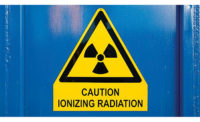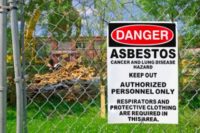The silica rule: What you need to know about OSHA’s standard

Exposure to respirable crystalline silica is nothing new for employees on construction sites. However, this exposure can cause serious health issues. In response to these concerns, OSHA issued a new rule on exposure to silica in construction (29 CFR 1926.1153). The PEL is now 50 micrograms per cubic meter of air (μg/m3) for an 8-hour time-weighted average (TWA). The action level of airborne silica is 25 μg/m3, calculated as an 8-hour TWA. The action level (set at half the PEL) triggers requirements for exposure assessment.
The standard does not apply where silica exposures will remain low under any foreseeable conditions. This includes tasks like mixing mortar; pouring concrete footers, slab foundation and foundation walls; and removing concrete formwork.
Employer options
Employers can either use a control method laid out in Table 1 of the construction standard, or they can measure workers’ exposure to silica and independently decide which dust controls work best.
Table 1 matches common construction tasks with dust control methods to help employers limit worker exposures to silica. The table includes methods known to be effective, like using water to prevent airborne dust or using ventilation to capture dust. In some operations, respirators may also be needed.
Where an employee performs more than one task on Table 1 during a shift, and the duration of all tasks combined is more than four hours, employers must use the respiratory protection specified for more than four hours per shift. If the combined duration of all tasks on Table 1 is less than four hours, employers may use the respiratory protection specified for less than four hours per shift.
Alternative exposure control methods
For tasks not listed in Table 1, or where the employer does not fully and properly implement the engineering controls, work practices, and respiratory protection described in Table 1, the employer must:
- Measure silica exposures that may be at or above an action level of 25 μg/m3, averaged over an eight-hour day.
- Protect workers from exposures above the PEL of 50 averaged over an eight-hour day.
- Use dust controls to protect workers from silica exposures above the PEL.
- Provide respirators to workers when dust controls cannot limit exposures to the PEL.
Additional requirements
- Where required, the employer must provide each employee a respirator that complies with the requirements of 1926.1153(e) and 1910.134.
- Employers must have a written exposure control plan that contains at least the elements in 1926.1153(g).
- A designated competent person must inspect jobsites, materials, and equipment to implement the written exposure control plan.• Medical surveillance at no cost must be available for each employee required to use a respirator for 30 or more days per year.
- Employees must be trained when they are assigned to a position involving exposure to respirable crystalline silica.
- Employers must include respirable crystalline silica in Hazard Communication Program requirements.
- Employees must demonstrate knowledge and understanding of: 1) silica exposure health hazards; 2) tasks that could result in exposure; 3) related engineering controls, work practices, and respirators to be used; 4) the contents of 1926.1153; 5) the designated competent person; and 6) the medical surveillance program.
Looking for a reprint of this article?
From high-res PDFs to custom plaques, order your copy today!






